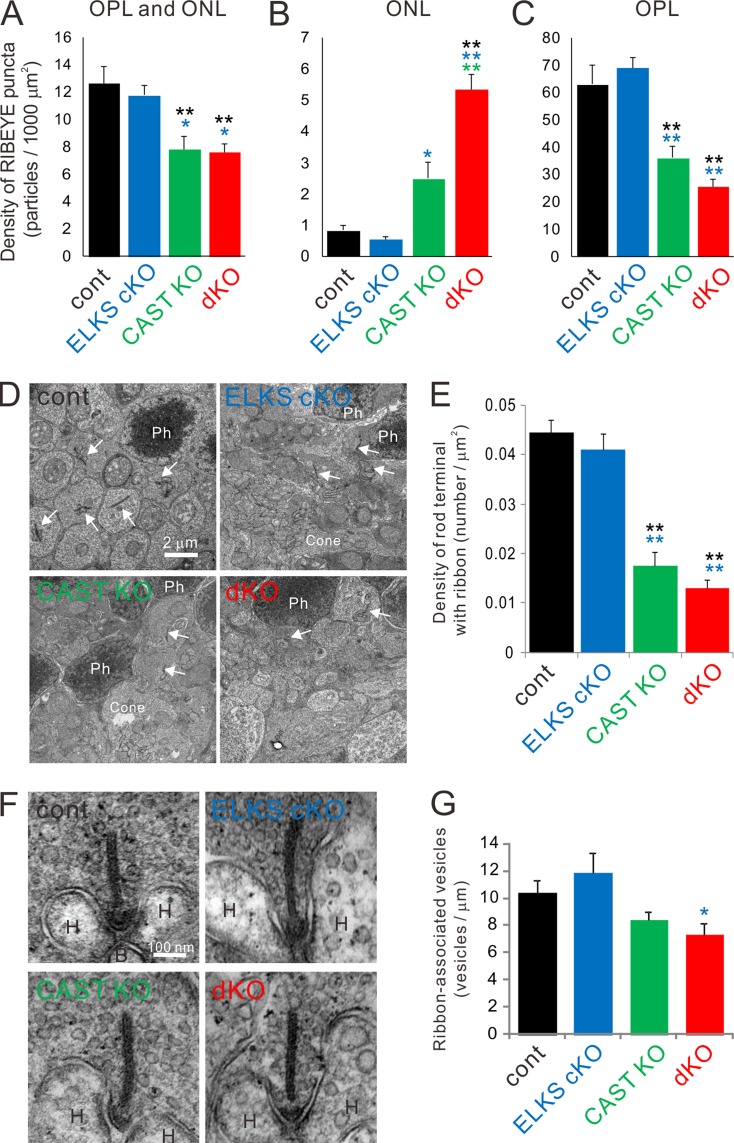Figure 3.
Genetic ablation of CAST/ELKS leads to fewer ribbon-bearing rod terminals in the ONL and attenuated vesicle distributions on presynaptic ribbons. (A–C) Density of RIBEYE-labeled ribbon synapses in the entire area of OPL and ONL (A), ONL (B), and OPL (C). RIBEYE density in the entire area is significantly reduced in CAST KO and dKO. In detail, ectopic synapses in the ONL are significantly increased in CAST KO and dKO; dKO is further enhanced compared with CAST KO. Conversely, RIBEYE density in the OPL is reduced by almost half in CAST KO and dKO compared with the control and ELKS cKO. Colored asterisks indicate statistical significance from respective colored genotypes, mean ± SEM; control (n = 4), ELKS cKO (n = 4), CAST KO (n = 6), and dKO (n = 7). *, P < 0.05; **, P < 0.01 (one-way ANOVA followed by post hoc Tukey test). (D and E) Density of ribbon-bearing rod terminals was measured in electron micrographs taken at 2,500 magnification. Images from the ONL showed rod terminals with ribbons (arrows), cone terminals including several mitochondria and ribbons (Cone), and photoreceptor nucleus (Ph). The density of ribbon-bearing rod terminals was significantly decreased in CAST KO and dKO mice, mean ± SEM; control (n = 24), ELKS cKO (n = 20), CAST KO (n = 22), and dKO (n = 24). **, P < 0.01 (one-way ANOVA followed by post hoc Tukey test) (F) Representative images of rod terminals including ribbons (arrow) and horizontal (H) cell tips in 100,000 magnification images. (G) The number of ribbon-associated synaptic vesicles was significantly decreased in dKO compared with the ELKS cKO, mean ± SEM; control (n = 5), ELKS cKO (n = 6), CAST KO (n = 5), and dKO (n = 5). *, P < 0.05 (one-way ANOVA followed by post hoc Tukey test). Bars, 2 µm in D; 100 nm in F.

